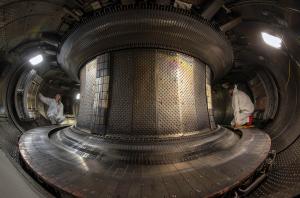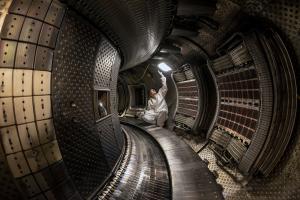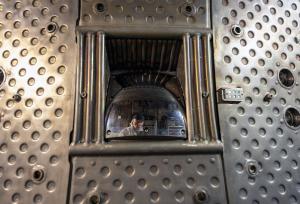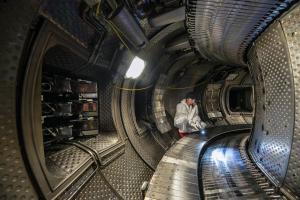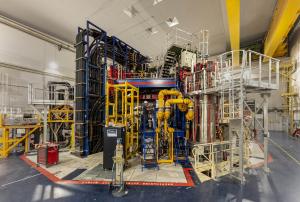WEST is more than an upgrade from the quarter-century-old Tore Supra tokamak: it is a reinvented machine that now serves as a test bench and risk-limiter for ITER. Having replaced its previous carbon/carbon fibre limiter with an ITER-grade full-tungsten divertor (hence the "W" in WEST, for the chemical symbol of tungsten), the tokamak launched its first experimental campaign in 2017 with only a few actively cooled plasma-facing units. Five years later WEST, housed at the French nuclear research centre CEA Cadarache, had a fully operational ITER-grade divertor and had launched its
"Phase II" campaign centred on a succession of high-fluence pulses reaching or exceeding 100 seconds.
With a new experimental campaign set to begin in November, WEST is presently being conditioned and equipped with new systems and components. A refurbished electron cyclotron resonance heating (ECRH) antenna has been installed, a small proportion of Chinese-procured divertor elements have been replaced with European equivalents, divertor elements are being equipped with ITER-like divertor thermocouples, and various cleaning and analysis operations are being performed.
It is into this veteran but completely rejuvenated machine that this reporter crawled last week at the CEA's invitation.

